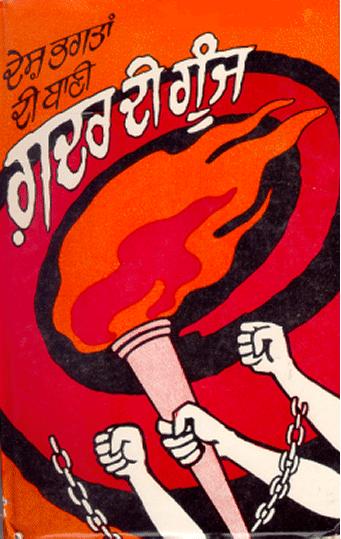|
Hindu–German Conspiracy
The Hindu–German Conspiracy (Note on the name) were a series of attempts between 1914 and 1917 by Indian nationalist groups to create a pan-Indian rebellion against the British Empire during World War I. This rebellion was formulated between the Indian revolutionary underground and exiled or self-exiled nationalists in the United States. It also involved the Ghadar Party, and in Germany the Indian independence committee in the decade preceding the Great War. The conspiracy began at the start of the war, with extensive support from the German Foreign Office, the German consulate in San Francisco, and some support from Ottoman Turkey and the Irish republican movement. The most prominent plan attempted to foment unrest and trigger a Pan-Indian mutiny in the British Indian Army from Punjab to Singapore. It was to be executed in February 1915, and overthrow British rule in the Indian subcontinent. The February mutiny was ultimately thwarted when British intelligence infiltr ... [...More Info...] [...Related Items...] OR: [Wikipedia] [Google] [Baidu] |
Seditious Conspiracy
Seditious conspiracy is a crime in various jurisdictions of Conspiracy (criminal), conspiring against the authority or legitimacy of the state. As a form of sedition, it has been described as a serious but lesser counterpart to treason, targeting activities that undermine the state without directly attacking it. Common law In common law jurisdictions, seditious conspiracy is an agreement by two or more persons to do any act with the Intention (criminal law), intention to excite hatred or contempt against the persons or institutions of state, to excite the alteration by unlawful means of a state or church matter established by law, to raise discontent among the people, or to promote ill will and enmity between classes. Criticising a policy or state institution for the purpose of obtaining lawful reform is not seditious. Seditious conspiracy, like other forms of sedition, developed during the late medieval period to apply to activities that threatened the social order but fell shor ... [...More Info...] [...Related Items...] OR: [Wikipedia] [Google] [Baidu] |
Ghadar Conspiracy
The Ghadar Mutiny, also known as the Ghadar Conspiracy, was a plan to initiate a pan-India mutiny in the British Indian Army in February 1915 to end the British Raj in India. The plot originated at the onset of World War I, between the Ghadar Party in the United States, the Berlin Committee in Germany, the Indian revolutionary underground in British India and the German Foreign Office through the consulate in San Francisco. The incident derives its name from the North American Ghadar Party, whose members of the Punjabi community in Canada and the United States were among the most prominent participants in the plan. It was the most prominent amongst a number of plans of the much larger Hindu–German Mutiny, formulated between 1914 and 1917 to initiate a Pan-Indian rebellion against the British Raj during World War I. The mutiny was planned to start in the key state of Punjab, followed by mutinies in Bengal and rest of India. Indian units as far as Singapore were planned to par ... [...More Info...] [...Related Items...] OR: [Wikipedia] [Google] [Baidu] |
Battaglione Azad Hindoustan
''Battaglione Azad Hindoustan'' (in Italian: ''Battaglione India libera'' - "Free India Battalion") was a foreign legion unit formed in Fascist Italy under the ''Raggruppamento Centri Militari'' in July 1942. The unit, raised initially as ''Centro I'', was headed by Mohammad Iqbal ShedaiBorra R. ''Subhas Chandra Bose, the Indian National Army, and the war of India's liberation.'' J Hist Rev.Winter, 1982; vol. 03 no. 4: p. 407. – a long term Indian resident of Rome – and comprised Indian former prisoners of war from British India.. Raised along with units dedicated to Tunisia (''Centro T'') and the Arabs (''Centro A''), it was tasked with intelligence gathering and sabotage operations behind enemy lines. A part of ''Centro I'' was renamed ''Battaglione Azad Hindoustan'' in August 1942 when the ''Raggruppamento Centri Militari'' itself was redesignated as ''Raggruppamento Frecce Rosse'' ("Red Arrows group").. By the time of its disbandment in November 1942, ''Battaglio ... [...More Info...] [...Related Items...] OR: [Wikipedia] [Google] [Baidu] |
Mohammad Iqbal Shedai
Mohammad Iqbal Shedai (Punjabi language, Punjabi: ) was a British Indian and later Pakistani activist who espoused independence for India and opposition to British colonial policies. He spent most of his life in self-exile in Asian and European countries. Early life One of eleven children, Shedai was born as Muhammad Iqbal Shedai in 1888 in Pura Hairanwala, Sialkot, British India (now Pakistan), into a Punjabi Muslim family belonging to the Muslim Rajputs, Rajput-Bhutta caste, to Chaudhary Ghulam Ali Bhutta, who taught science, mathematics and English at the Government Murray College Sialkot, Scotch Mission School and whose students included Muhammad Iqbal. He graduated from Sialkot's Murray College but wasn't accepted in Lahore's Law College as he was considered to be too anti-British.Majid Sheikh (18 November 2019)"Harking Back: The tale of the ‘other’ Iqbal of Sialkot" ''Dawn News''. Retrieved 3 February 2020. Political activism Shedai's political involvement began in 19 ... [...More Info...] [...Related Items...] OR: [Wikipedia] [Google] [Baidu] |



